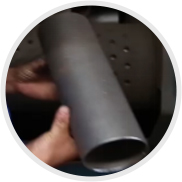 Afrikaans
Afrikaans  Albanian
Albanian  Amharic
Amharic  Arabic
Arabic  Armenian
Armenian  Azerbaijani
Azerbaijani  Basque
Basque  Belarusian
Belarusian  Bengali
Bengali  Bosnian
Bosnian  Bulgarian
Bulgarian  Catalan
Catalan  Cebuano
Cebuano  Corsican
Corsican  Croatian
Croatian  Czech
Czech  Danish
Danish  Dutch
Dutch  English
English  Esperanto
Esperanto  Estonian
Estonian  Finnish
Finnish  French
French  Frisian
Frisian  Galician
Galician  Georgian
Georgian  German
German  Greek
Greek  Gujarati
Gujarati  Haitian Creole
Haitian Creole  hausa
hausa  hawaiian
hawaiian  Hebrew
Hebrew  Hindi
Hindi  Miao
Miao  Hungarian
Hungarian  Icelandic
Icelandic  igbo
igbo  Indonesian
Indonesian  irish
irish  Italian
Italian  Japanese
Japanese  Javanese
Javanese  Kannada
Kannada  kazakh
kazakh  Khmer
Khmer  Rwandese
Rwandese  Korean
Korean  Kurdish
Kurdish  Kyrgyz
Kyrgyz  Lao
Lao  Latin
Latin  Latvian
Latvian  Lithuanian
Lithuanian  Luxembourgish
Luxembourgish  Macedonian
Macedonian  Malgashi
Malgashi  Malay
Malay  Malayalam
Malayalam  Maltese
Maltese  Maori
Maori  Marathi
Marathi  Mongolian
Mongolian  Myanmar
Myanmar  Nepali
Nepali  Norwegian
Norwegian  Norwegian
Norwegian  Occitan
Occitan  Pashto
Pashto  Persian
Persian  Polish
Polish  Portuguese
Portuguese  Punjabi
Punjabi  Romanian
Romanian  Russian
Russian  Samoan
Samoan  Scottish Gaelic
Scottish Gaelic  Serbian
Serbian  Sesotho
Sesotho  Shona
Shona  Sindhi
Sindhi  Sinhala
Sinhala  Slovak
Slovak  Slovenian
Slovenian  Somali
Somali  Spanish
Spanish  Sundanese
Sundanese  Swahili
Swahili  Swedish
Swedish  Tagalog
Tagalog  Tajik
Tajik  Tamil
Tamil  Tatar
Tatar  Telugu
Telugu  Thai
Thai  Turkish
Turkish  Turkmen
Turkmen  Ukrainian
Ukrainian  Urdu
Urdu  Uighur
Uighur  Uzbek
Uzbek  Vietnamese
Vietnamese  Welsh
Welsh  Bantu
Bantu  Yiddish
Yiddish  Yoruba
Yoruba  Zulu
Zulu drive rollers for belt conveyors
Drive Rollers for Belt Conveyors An Overview
Belt conveyors are integral to a vast array of industries, providing an efficient method for transporting materials. At the heart of these systems lie the drive rollers, crucial components that facilitate the movement of the conveyor belt. This article delves into the significance, types, maintenance, and advancements of drive rollers for belt conveyors.
Importance of Drive Rollers
Drive rollers serve as the driving force behind the conveyor belt, converting motor power into motion. They are typically located at one end of the conveyor system, where the motor is situated. When powered, these rollers rotate, pulling the belt along and moving the materials placed on top. The efficiency and effectiveness of a belt conveyor system heavily depend on the performance of its drive rollers. If they fail or wear down, it can lead to significant downtimes and operational inefficiencies, emphasizing the need for quality rollers and regular maintenance.
Types of Drive Rollers
Drive rollers come in various designs and materials, each catering to specific operational requirements. Here are the most common types
1. Steel Drive Rollers Known for their strength and durability, steel rollers are often used in heavy-duty applications. They can withstand considerable weight and are resistant to wear, making them ideal for harsh environments.
2. Rubber-Coated Drive Rollers These types of rollers are coated with rubber to enhance grip and minimize slippage. They are suitable for applications where traction is essential, such as in food processing or packaging.
3. Plastic Drive Rollers Lightweight and resistant to corrosion, plastic rollers are increasingly popular in industries such as pharmaceuticals and electronics. They can also be more economical due to lower manufacturing costs.
4. Heavy-Duty Drive Rollers Designed to handle exceptionally heavy loads, these rollers are often reinforced and incorporate advanced materials and designs to ensure longevity and performance under stress.
Maintenance of Drive Rollers
Regular maintenance of drive rollers is essential to ensure the longevity and efficiency of conveyor systems
. Here are some key maintenance practicesdrive rollers for belt conveyors

- Inspection Consistent inspections should be conducted to check for signs of wear, damage, or misalignment. Early detection of potential issues can save time and costs associated with more severe breakdowns.
- Cleaning Dirt, debris, and other materials can build up on drive rollers, impairing their functionality. Regular cleaning helps in maintaining the grip and performance of the rollers.
- Lubrication Proper lubrication of roller bearings is vital to reduce friction and prevent overheating. Following a lubrication schedule that aligns with operational demands is essential in ensuring smooth operation.
- Replacement Timely replacement of worn-out or damaged rollers is imperative. Operators should keep an inventory of spare parts to minimize downtime when issues arise.
Advancements in Drive Roller Technology
As industries evolve, so does the technology behind drive rollers for belt conveyors. Recent advancements focus on enhancing efficiency and reducing operational costs. Innovations include
- Smart Sensors The integration of smart sensors in drive rollers allows for real-time monitoring of operational conditions. These sensors can detect changes in performance, such as unusual vibrations or temperature spikes, enabling preventive maintenance.
- Energy-Efficient Designs Modern roller designs aim to lessen energy consumption, which is an ongoing concern for many industries. Energy-efficient rollers can significantly reduce operational costs and environmental impact.
- Custom Solutions Many manufacturers now offer customizable drive roller solutions tailored to specific application needs. This flexibility allows industries to optimize their conveyor systems for enhanced performance.
Conclusion
Drive rollers are essential for the efficient operation of belt conveyors across diverse industries. Understanding their importance, types, and maintenance practices can enhance operational efficiency and reduce downtime. As technology continues to advance, the future of drive rollers promises increased efficiency and reliability, making them even more vital in contemporary material handling solutions. Investing in quality drive rollers and adhering to best maintenance practices will undoubtedly yield long-term benefits for any conveyor system operator.
-
Revolutionizing Conveyor Reliability with Advanced Rubber Lagging PulleysNewsJul.22,2025
-
Powering Precision and Durability with Expert Manufacturers of Conveyor ComponentsNewsJul.22,2025
-
Optimizing Conveyor Systems with Advanced Conveyor AccessoriesNewsJul.22,2025
-
Maximize Conveyor Efficiency with Quality Conveyor Idler PulleysNewsJul.22,2025
-
Future-Proof Your Conveyor System with High-Performance Polyurethane RollerNewsJul.22,2025
-
Driving Efficiency Forward with Quality Idlers and RollersNewsJul.22,2025





























